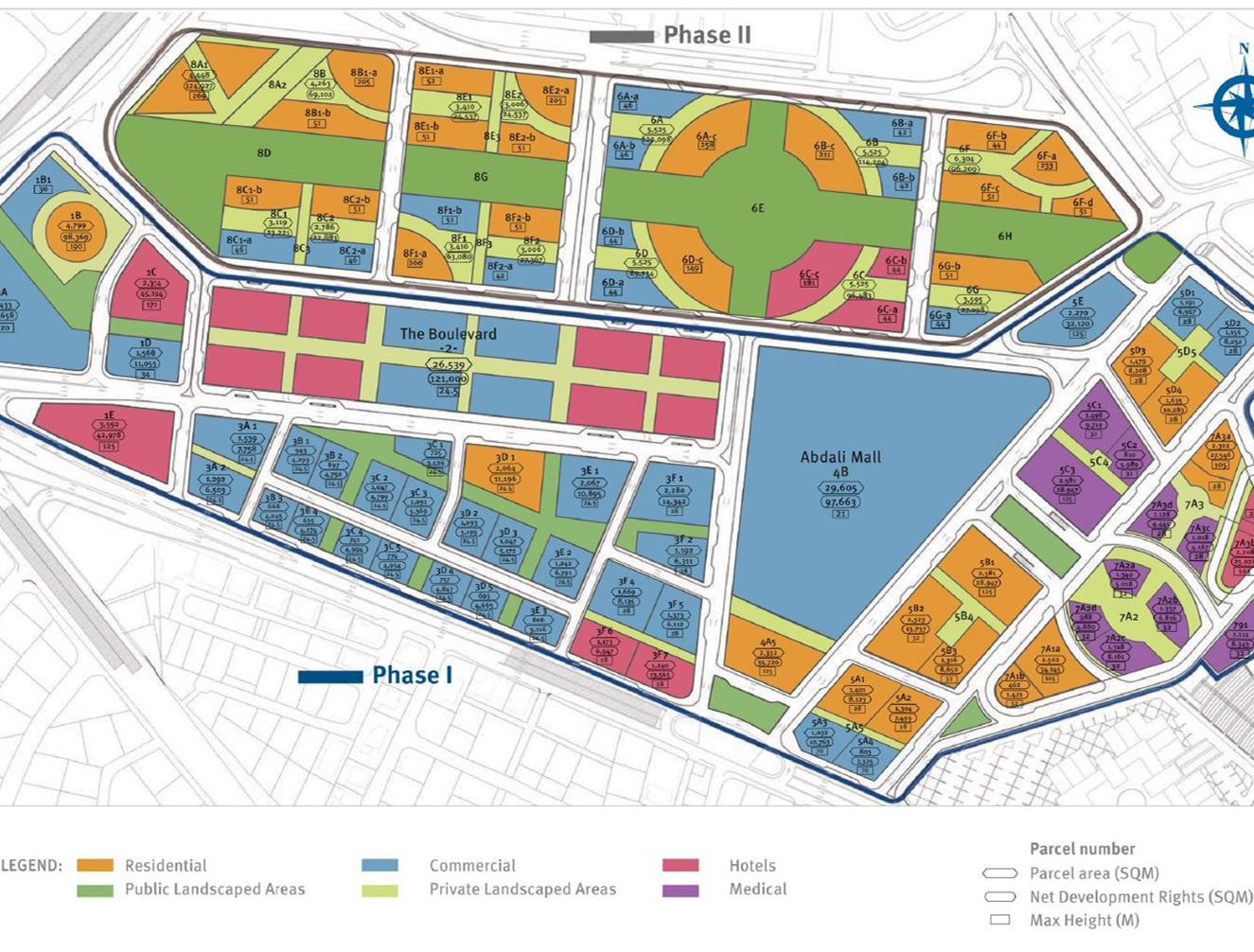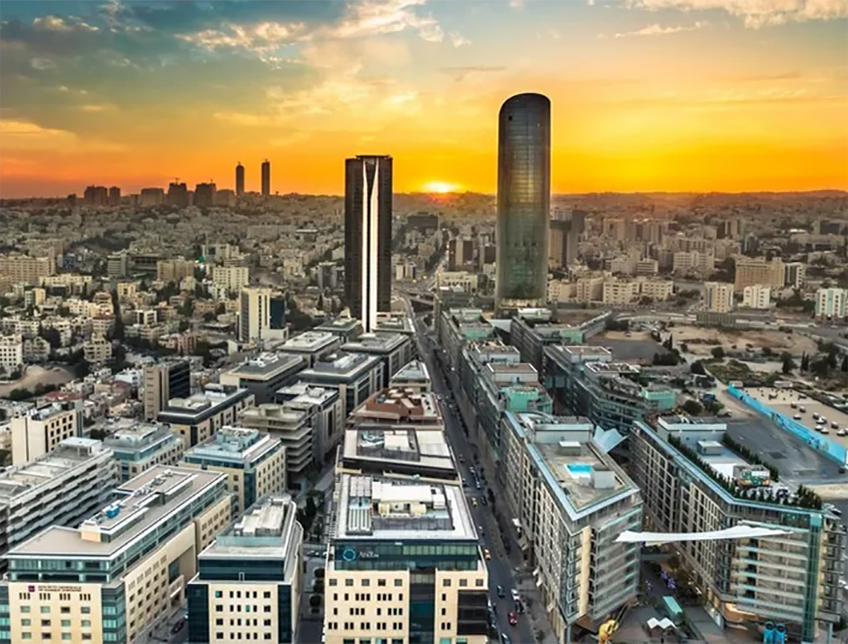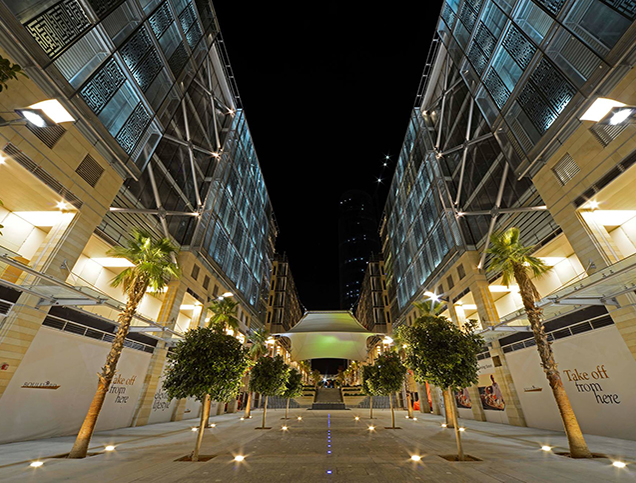
Close

Approach Words: Integrated City, Urban Livability, Vibrant City
Public Policy Instruments: Financial Mechanism, Organization, Physical Intervention, Planning, Regulatory
The Abdali project is a large mixed-use urban development located at the heart of Amman city,1 in proximity to major public, financial, commercial and touristic institutions.2 Envisioned as the new Downtown of Amman,3 it “will catapult the city into the 21st Century, placing it on par with other international modern urban centers”.4 The project aims to become the hub of economic activity and a premier leisure destination for the Jordanian capital5 by attracting foreign and local investments6 and accommodating new businesses, subsequently creating employment opportunities.7 Approximately 100,000 people are expected to live, work, and visit the new downtown area daily.8

Title: Abdali Project Master Plan.
Source: Click Here

Title: View of Al Abdali Project after Construction.
Source: Click Here

Title: Abdali Boulevard.
Source: Click Here

Title: Public Spaces in Abdali Project.
Source: Click Here
A detailed master plan was developed for the new downtown, covering an area of 384,000 square meters of land, with a total built up area of 1.8 million square meters.9 It consists of a mix of uses, including residential (49%), offices (17%), commercial (20%), hotels (11%), and medical facilities(3%).10 11 The project components include:
In addition, the project incorporates spaces for social gatherings and events, such as public piazzas and public parks,22 as well as the spring festival, which includes musical performances and recreational activities.23 The project also features 0.06 square kilometers of pedestrian roads and underground parking with a capacity of 25,000 cars after completing Phases 1 and 2.24
Regarding digital infrastructure, the Abdali project implemented a fiber optic communication network to provide high-speed, reliable internet connectivity, ensuring efficient communication and data transfer for residents, businesses, and visitors.25

Contractor/Implementer
The project was initiated by Abdali Investment and Development (AID), established in 2004 as a public-private partnership with an estimated value exceeding USD 5 billion.26 It involves the National Resources and Development Corporation (MAWARED),27 a state-owned corporation,28 and Horizon International for Development,29 a real estate holding company owned by Bahaa Hariri.30 The joint venture expanded when United Real Estate Company (URC)-Jordan, a subsidiary of Kuwait Projects Company (KIPCO), joined as a partner.31 The master plan was designed by Laseco.32
The project has been under implementation in two key phases: the first phase was implemented between 2006 and 2014 and encompassed the construction of the boulevard area.33 34 The second phase, which is under implementation, is projected to cover an area of approximately 0.13 square kilometers of residential, commercial, and public spaces.35
Project Link
Endnotes
References